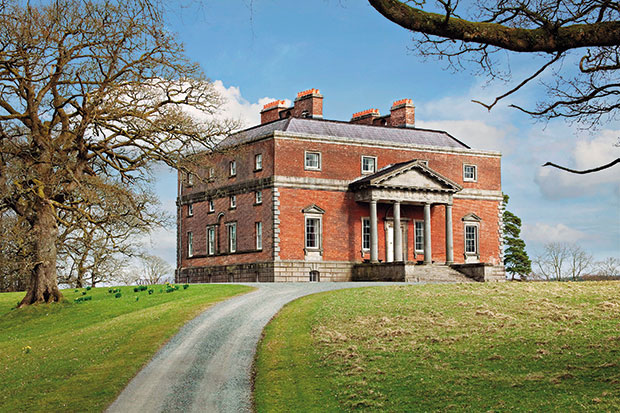If you had the resources, Georgian Ireland must have been a very agreeable place in which to live. It was certainly more prosperous and peaceful than it would be after the 1848 famine. This idyllic world is captured in Patricia McCarthy’s scholarly and highly entertaining work, which stretches from the start of the building of Castletown House, Co. Kildare, in 1722, to the 1848 famine.
The chapters are arranged as though one were visiting an Irish country house: you approach the house in its landscaped setting; you are led through the hall; you are ushered into the dining room; you are shown the other public rooms, such as the saloon, drawing room and library; you are taken up to the family bedrooms and dressing rooms, and out to the stables; and finally, as you scrabble for your parting tip or ‘vail’, you make contact with the servants.
The 18th-century artist Mary Delany, who spent much of her life in Dublin, described the hall as a place where ‘music, dancing, shuttlecock, draughts, and prayers take their turn’. It led to grand staircases, which in turn went up to a bedroom lobby, a grand open space around which the main bedrooms centred — a peculiarly Irish feature, according to the late John Cornforth.
On an axis with the hall were the saloon and the drawing room. The saloon was an important reception room, with lavish architectural decorations, but by the early 1800s it was replaced by the drawing room, where visitors assembled before entering the dining room, making sticky conversation without introductions or a pre-prandial drink. It was to there the ladies retired after dinner, to drink tea, compare dresses and swap scandals, leaving the men to carouse in the dining room.
This room was usually serviced by a backstairs from the kitchen. Its walls and ceilings were often decorated in stucco and also with large painted landscapes. By the mid-18th century the long mahogany dining table, covered with a white cloth, prevailed — a cloth on which it was perfectly acceptable to wipe your mouth and hands. The removal of the cloth signalled the moment when serious drinking and endless rounds of toasts began, and drunken visitors hankered after the chamber-pot as much as the punch-bowl.
In contrast, the library afforded repose and privacy, but by about 1815 it more often served as a general living room. It was also somewhere to indulge eccentric whims. At Downhill, Co. Derry, a summer library in the form of a rotunda was built on the edge of a cliff overlooking the Atlantic.
A widespread pastime in country houses was amateur theatricals, ranging from Mrs Siddons’s performances in a specially erected theatre at Shane’s Castle, Co. Antrim, to a makeshift stage in the parlour at Castle Blunden, Co. Kilkenny, where Dorothea Herbert and her friends ‘made a real farce of it — we had only some old bed curtains for scenery…’ Even the servants took part: in 1771 the footmen and postilions at Carton, Co. Kildare, put on a performance of George Farquhar’s The Beaux Stratagem, which Lady Louisa Conolly thought had improved from their ‘very tolerable’ efforts the previous year.
In Ireland, things were mostly on a larger scale, and more eccentric, than in England. Richard Martin MP had a 26-mile avenue within his grounds leading up to Bally-nahinch, his house in Connemara; and a megalomaniac Gothic gateway greeted one at Ballysaggartmore, Co. Waterford. English visitors were aware of larger numbers of servants, whom they often regarded as lazy and rapacious. The Rev. Samuel Madden remarked in 1738:
We keep many of them in our houses … more for show than use, and rather to let people see that we have them than that we should have any occasion for them.
The ageing Sir William Ponsonby Barker, of Cilcooley Abbey, Co. Tipperary, used a female servant as a human hot-water-bottle at night. When a visitor required a bed at a house in Cork, the hostess said her husband was ‘very accommodating: he sleeps with the butler’. All these elements add to a highly informative and entertaining read.






Comments